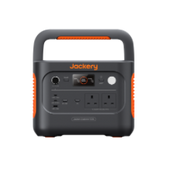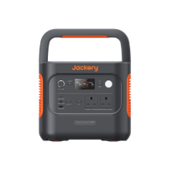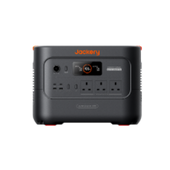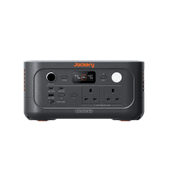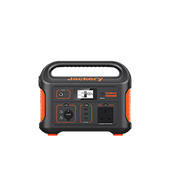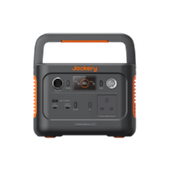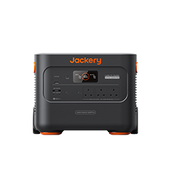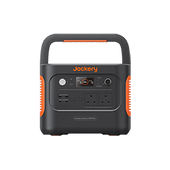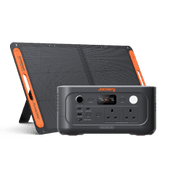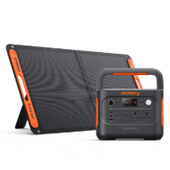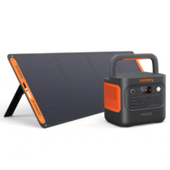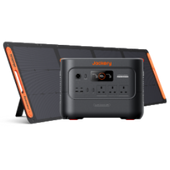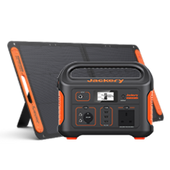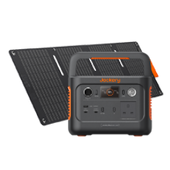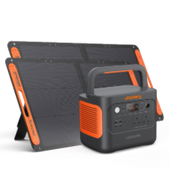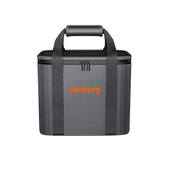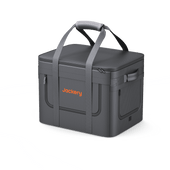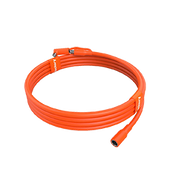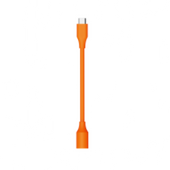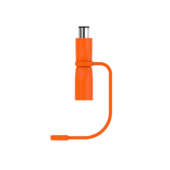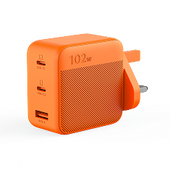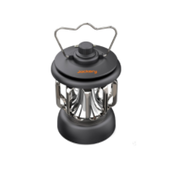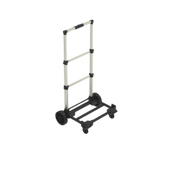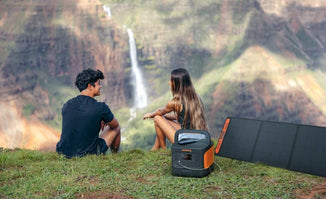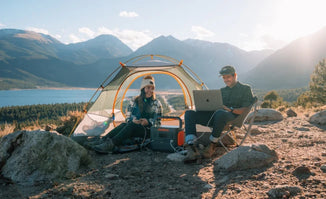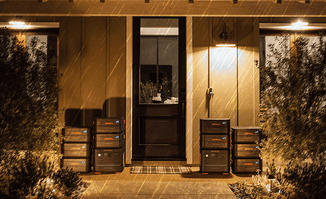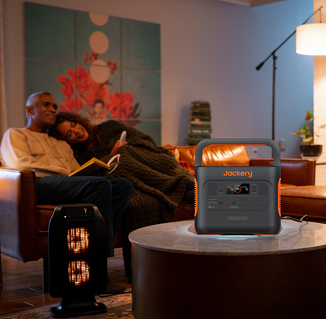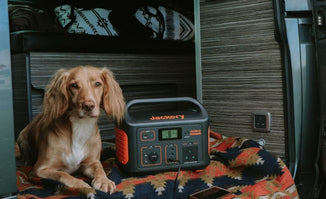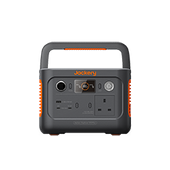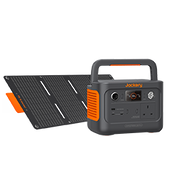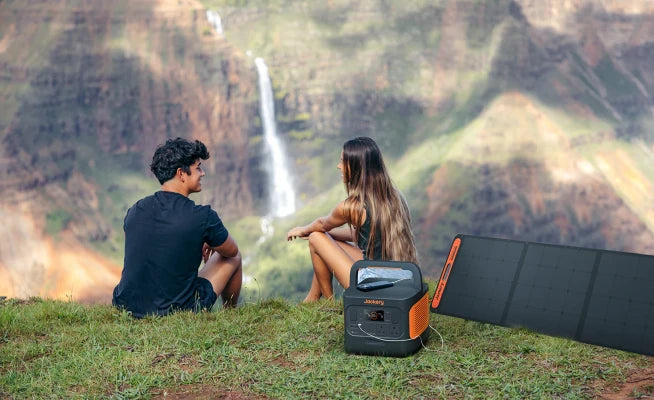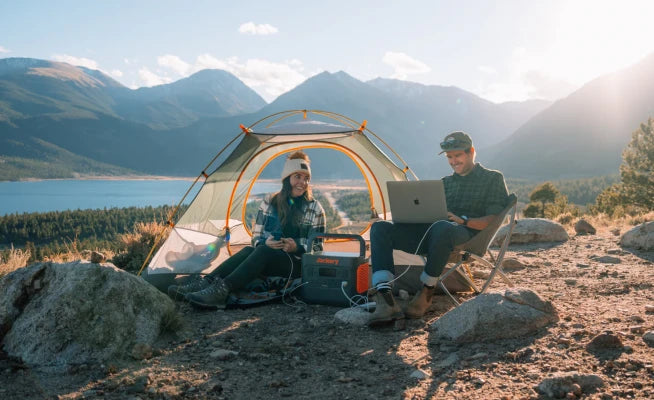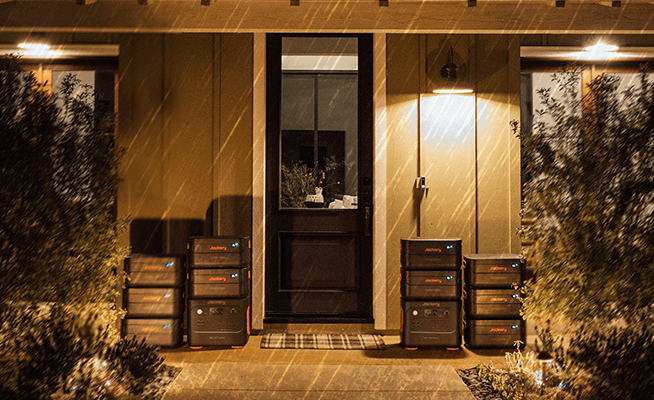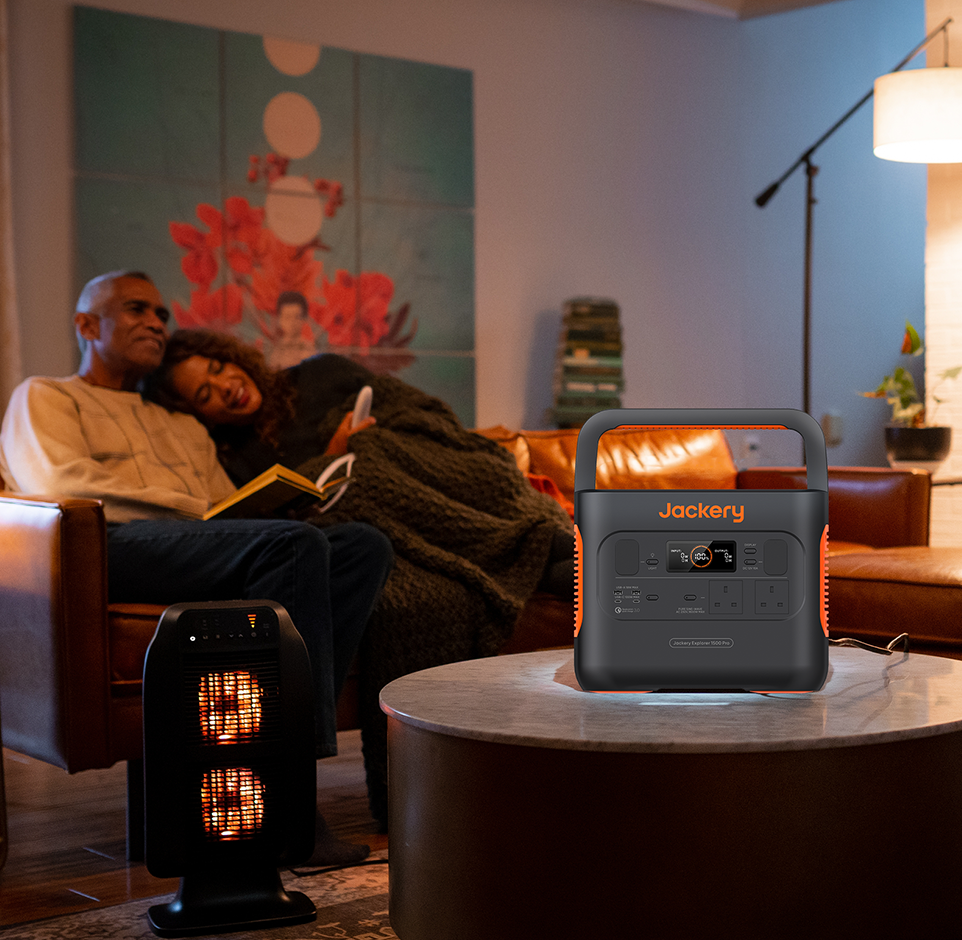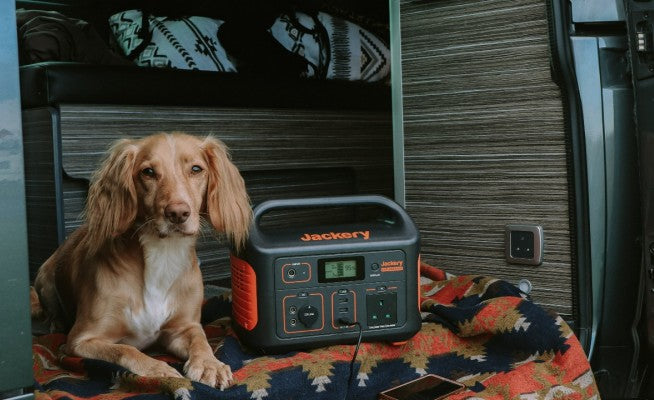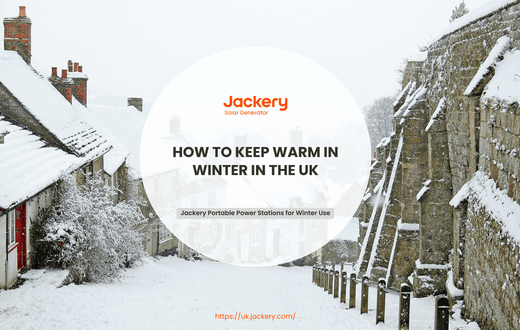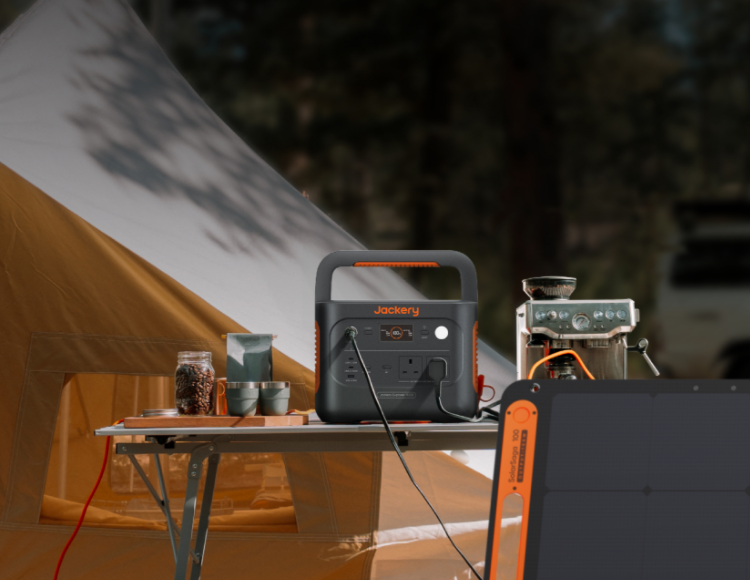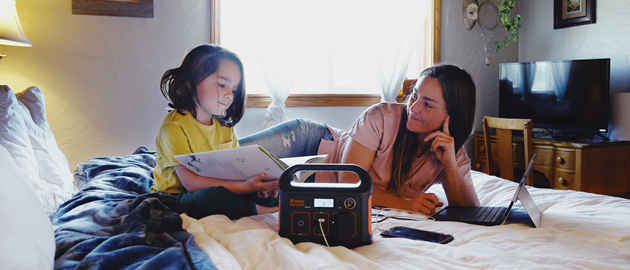For many people, winter in the UK is both a challenge and a unique experience. The cold and wet climate, unique heating system, diverse dressing styles, intense festive atmosphere and rich winter activities constitute winter's unique charm and style in the UK.
Whether in the city streets or the wild, mastering some effective warming tips in the UK can help you spend a warm winter. In short, this guide will help you effectively keep warm indoors and outdoors in the UK winter and enjoy a comfortable and pleasant winter.
To keep warm outdoors or during power outages, you can try Jackery Portable Power Stations to charge warming equipment such as portable space heaters, electric blankets, and other appliances used for winter camping, hiking, or off-grid living.
|
Key Takeaways: |
|
- The British winter has both the coldness of the damp and windy weather and the warmth and joy of the festive atmosphere. - Many people in the UK are concerned about how to dress warmly and stylishly in winter. - Some tips for keeping warm indoors can help you spend a warm and comfortable winter in the UK. - The British winter is exceptionally wet and cold, so keeping warm outdoors is particularly important. - We recommend Jackery Explorer 2000 Plus or 1000 v2 to charge your appliances during unexpected power outages or outdoor winter camping. - To avoid frostbite, it is crucial to understand some essential prevention and response measures. |
What Is Winter Like in the UK?
The winter in the UK lasts from November to March of the following year. It is a season of cold and warmth, with damp and windy weather bringing coldness and the festive atmosphere bringing warmth and joy. Understanding the winter in the UK will help you better adapt to life here and also help you appreciate the unique charm of this country more deeply.
The Climate in the UK in Winter
From the perspective of climate characteristics, the winter in the UK is generally cold and wet. The average temperature usually hovers between 0 and 7 degrees. Although this temperature range is not extremely low, the perceived temperature often makes people feel particularly cold. In addition, the sunshine time in winter is extremely short, and it starts to get dark at three or four in the afternoon.
There are also significant differences in the winter climate in different regions of the UK. Scotland is usually colder and has more snow than England. Cities such as Edinburgh and Glasgow are often covered with snow in winter, providing good conditions for skiing enthusiasts. There are few snow chances in southern England, such as London and Cardiff, and the temperature is mild.
The Life of the British in Winter
Modern homes in the UK are generally equipped with heating or floor heating systems to cope with the cold in winter. Therefore, heating costs in winter are a considerable expense for most British families.
In addition, British winter clothing is quite distinctive. Most British people prefer to wear thick coats, scarves and hats to keep out the cold. Locals may choose warmer clothing in northern regions such as Scotland due to lower temperatures and more snow.
The British winter is also famous for its unique festive atmosphere. During Christmas, the streets are full of colourful lights, the shop windows are filled with exquisite Christmas decorations, and the whole country is immersed in a joyful and warm atmosphere.
How to Dress to Keep Warm in Winter?
With the arrival of winter, low temperatures and cold winds make people feel cold. At the same time, the British winter is known for its damp, cold and changeable weather, especially in northern England and Scotland. Therefore, how to dress warmly and stylishly in winter has become a concern for many people living in the UK. Here are some suggestions for dressing warmly to help you spend a warm and comfortable British winter.
Layered Dressing Method
The UK's temperature difference between indoors and outdoors is large, so the layered dressing method is very practical. The basic principle is to wear thick clothes on the outside and thin clothes on the inside, and you can add or remove clothes at any time. For example, you can only wear a thin sweater or sweatshirt indoors and add a thick coat when you go out.
Inner Layer: For the inner layer, choose light, soft, and sweat-wicking clothes, such as wool or synthetic thermal underwear. Wool materials can keep warm even in humid environments, while synthetic materials have quick-drying characteristics.
Middle Layer: The middle layer mainly keeps you warm. You can choose a wool sweater, a knitted sweater or a fleece. Fleeces are breathable but less warm, while down or synthetic-filled jackets offer better warmth.
Outer Layer: Outer layers should be windproof and waterproof, such as down jackets, windbreakers or thick coats. Ensure your jacket collar, cuffs and hem are cinch-down to keep out the cold wind.
Material Selection
Choosing the right material for your clothing is crucial to staying warm in the winter. Natural materials such as wool, cashmere and down have excellent thermal insulation properties.
Wool: Its hollow structure makes wool an ideal choice for winter clothing.
Cashmere: Cashmere is softer and warmer than wool but more expensive.
Synthetic Materials: Quick-drying and abrasion-resistant polyester fibres are suitable as inner or mid-layer clothing. Artificial materials such as GORE-TEX and hollow fibres retain body heat and quickly dry out in humid conditions.
How to Keep Warm Indoors in Winter?
With winter's arrival, the UK's weather has become cold and wet, and many people are concerned about how to keep warm indoors. The following tips for indoor heating can help you spend a warm and comfortable winter in the UK.

Step 1: Use Heating Equipment Properly
The room temperature can be kept between 18 degrees Celsius and 20 degrees Celsius. Avoid turning up the temperature of the central heating equipment, which not only helps save energy but also prevents the human body from feeling uncomfortable due to the large temperature difference between indoors and outdoors.
In addition to traditional heating equipment, small equipment such as electric blankets, hand warmers, and thermos cups can be used for small-scale heating. Electric blankets can heat the quilt before going to bed, hand warmers can be carried with you, and thermos cups can keep the temperature of drinks.
Step 2: Enhance Indoor Insulation
Insulate your home to ensure that the insulation effect of your home is as good as possible.
|
Home Insulation |
|
|
Seal Doors and Windows |
Check to see if your doors and windows are tight. Installing seals can effectively prevent cold air from entering the room. The most common example is cold air blowing through the gap under the door. |
|
Use Insulation |
You can keep warm by replacing the insulation on the walls or ceiling. |
|
Use Thermal Curtains |
Choose curtains with thick materials to reduce heat loss through the windows. |
|
Lay Carpets |
Floors (especially tile or hardwood floors) are one of the main ways heat is lost. Carpets can effectively keep your home warm. |
Step 3: Wear the Right Clothes
It is also essential to wear the right clothes indoors. Thermal underwear, sweaters and thick socks are recommended. If you feel cold, you can add a coat or shawl. In addition, don't put your hands in your pockets, but let your hands swing at your sides to promote blood circulation.
Step 4: Exercise Regularly
Adequate indoor exercises (push-ups, sit-ups, or skipping rope) can promote blood circulation and improve your body's resistance to cold. For example, you can warm up and increase your core temperature by exercising for 20-30 minutes.
Step 5: Hot Food & Drinks
Eating high-calorie foods and hot drinks in winter can keep your body warm. Hot tea, milk, and soup provide heat and promote blood circulation, making the body feel warm from the inside out.
Properly increasing foods rich in protein and fat, such as chicken, fish, beans, and nuts, can help the body generate more heat. Avoid drinking alcohol as it lowers your body temperature.
Step 6: Take a Hot Bath
A hot bath is enough to restore your body to a reasonable temperature. In addition, a hot bath or shower warms you up and increases air humidity to prevent dry skin. Set the water temperature of the bathtub or shower to the highest temperature you can bear, and spend 10-30 minutes relaxing in the water to let your body temperature rise.
How to Keep Warm Outdoors in Winter?
When winter arrives, cold and windy weather can often be unbearable outside. British winters are known for their wet, cold and unpredictable weather, so keeping warm is especially important when outside. Here are some practical tips for keeping warm outside in the UK to help you stay comfortable and warm.

Step 1: Limit Your Time Outside
Only go out in freezing weather if you have to. When you're outside, stay in the sun to keep warm naturally. If you're playing or working outside and the weather is below freezing, take a break inside every 15-30 minutes to warm up again.
Step 2: Wear Layers
Layers of clothing are better at keeping out cold air than a single thick piece. This dressing method also makes it easier to adjust to changes in indoor and outdoor temperatures. The head, hands and feet are the parts of the body that lose heat most efficiently, so they need special protection.
Head: Wear a hat to reduce heat loss. A wool hat or a fleece hat is a good choice.
Neck: Scarves keep you warm and add a sense of style. Choose a soft and warm scarf.
Hands: Gloves are a must-have in winter. Leather or wool gloves are both warm and stylish.
Feet: Choose warm shoes and thick socks. It rains a lot in the UK in winter, so a pair of waterproof shoes or boots is necessary. You can choose wool or fleece socks.
Step 3: Increase Physical Activity
Feeling cold outdoors for a long time is easy, and moderate activity can effectively increase body temperature. Therefore, when outdoors, do some simple exercises, such as swinging your arms or stepping on the spot, which can promote blood circulation and increase body heat. But be careful of slippery ground when doing warm-up exercises outdoors.
Step 4: Prepare for Warming & Waterproof Equipment
If you find it challenging to keep warm, you can carry some small heat sources. For example, a heat pack is a great companion for outdoor activities in winter. Carry a few heat packs with you and stick them to the inside of your clothes when you feel cold, which can quickly provide extra warmth.
It is especially effective in areas prone to freezing, such as the waist and back. In addition, portable rechargeable hand warmers can keep you warm when it is cold outdoors, while thermos cups can provide hot drinks to help you stay warm from the inside out.
The British winter is windy and humid, and the wet and cold environment can quickly lower body temperature, so keeping the body dry is the key to staying warm. For example, a high-quality waterproof or assault jacket can block wind and rain. In addition, rain and snow are frequent in the British winter, so it is necessary to carry a sturdy umbrella or raincoat. Ensure that the rain gear can cover the whole body to prevent rain from wetting clothes and causing a drop in body temperature.
Step 5: Use Portable Power Station
Like Jackery Portable Power Station, portable power stations can support various electrical equipment, including electric blankets, hand warmers, and other heating equipment. If you must stay outdoors for a long time and cannot get a stable power supply through other means, the portable power station is undoubtedly a good choice.

Jackery Portable Power Stations for Winter Use
Whether used as home backup power in an unexpected winter power cut or for outdoor camping, the portable power station is essential for charging certain appliances and keeping warm indoors and outdoors.
In the winter, a Jackery Portable Power Station is essential as it is a backup power source during potential power outages caused by severe weather. This allows you to maintain essential appliances, such as heating systems, lights, and medical devices, ensuring safety and comfort during cold conditions, mainly when grid electricity is unavailable.
It can also charge critical electronics, such as phones and medical equipment, providing an emergency lifeline. This time, we will introduce Jackery Explorer 1000 v2 and 2000 Plus for winter use.
|
Appliances |
Working Hours |
|
|
Jackery Explorer 2000 Plus ( 2-12 kWh) |
Jackery Explorer 1000 v2 (1070Wh) |
|
|
Space Heater (1000W) |
1.7-10.2H |
0.9H |
|
Electric Blanket (250W) |
7-40.8H |
3.6H |
|
Kettle (800W) |
2.2-12.8H |
1.1H |
|
Hand Warmer (60W) |
29-170H |
15.2H |
|
CPAP (200W) |
8.7-51H |
4.5H |
Jackery Explorer 2000 Plus
Jackery Explorer 2000 Plus is more suitable for home backup and off-grid living in winter. It is a solid portable power solution that delivers outstanding performance. With its impressive capacity and powerful output, this device can support the operation of essential appliances for weeks, even certain large appliances, such as your space heater, electric blanket, kettle, etc.

- Expandable Powerhouse for Your Appliances: The Jackery Explorer 2000 Plus enables the addition of extra battery packs, increasing the capacity from 2 kWhto an impressive 12 kWh, thereby significantly satisfying your power needs. This solar product has a remarkable output of 3000W, and almost all essential warming appliances are powered.
- Higher Resistance & Reliability: The Explorer 2000 Plusstands out as a groundbreaking add-on battery pack that offers the convenience of recharging through solar panels. This feature increases versatility, boosts charging efficiency, and shortens charging time. Also, it can be taken indoors safely compared to other generators.
- Safe to Use with ChargeShield: ChargeShield is Jackery's advanced fast charge technology, featuring 62protective mechanisms, 12 protective algorithms, and four types of physical safety protection. This technology uses a unique stepped variable-speed charging algorithm to enhance safety and extend battery pack lifespan by 50%.
|
*Review from Our User |
|
I have been using Jackery batteries for a long time. I felt great excitement upon the release of the Explorer 2000 Plus, which marks the inaugural release of an expendable battery system by Jackery. The system supports a capacity of up to 12kWh with a 3000W 120V output or 24kWh with a 6000W 240V output—an ideal enhancement for my home backup system. |
Jackery Explorer 1000 v2
The Explorer 1000 v2 Portable Power Station provides an impressive 1500W output, 50% greater than earlier models. It efficiently supplies power to high-demand devices such as kettles, electric grills, and portable air conditioners. Equipped with USB-A/C connections and dual PD charging up to 100W, it can simultaneously charge several devices (phone, GPS device), rendering it the ideal companion for winter use.

- Long-Lasting Lifespan: The Explorer 1000 v2 is equipped with a superior LiFePO4 (LFP) battery, providing notable benefits compared to NCM cells. This power station offers a lifespan of up to 10 years and 4000 charge cycles at 70% capacity, ensuring superior durability and reliability for your power requirements.
- Portability & Versatility: The Explorer 1000 v2, weighing 23.8 pounds and 18% smaller than its predecessor, is more lightweight and portable than conventional devices. It includes a compact, collapsable handle for convenient transportation. This powerhouse conveniently fits into the back compartment for storage, ensuring you are always prepared and never lack power.
- Emergency Charge Mode: This mode, activated via the app, enables the Explorer 1000 v2 Portable Power Station to achieve a full charge in under one hour, providing essential power backup when the battery is depleted. Moreover, charging from 0% to 100% within two hoursvia an AC wall outlet prolongs battery longevity.
|
*Review from Our User |
|
I purchased the Jackery 1000 v2 for my Autosleeper Symbol Campervan. This compact unit is easy to store and efficiently powers all my 240-volt appliances, such as my Nespresso machine, toaster, and microwave. Additionally, it serves as reserve power and EHU when utilising the van off-grid, eliminating the necessity for hardwiring an inverter. I'm delighted with my purchase, which arrived just a few days after placing the order. |
How to Deal with Frostbite in Winter in the UK?
Although the winter in the UK is not as extreme as in some northern countries, the damp and chilly climate can still cause frostbite. Understanding some essential prevention and response measures is vital.
Symptoms of Frostbite
Severe frostbite may lead to tissue death and infection. Frostbite is usually divided into four levels according to its severity:
|
Severity of Frostbite |
Symptoms (frostbitten area) |
Affected Areas |
|
First-degree frostbite |
Skin turns pale |
Epidermis (common sites are the face, ears, hands and feet) Dermis (blisters appear) |
|
Second-degree frostbite |
Redness Swelling Pain Itching |
Dermis (blisters appear) |
|
Third-degree frostbite |
Turns dark brown/purple severe pain loss of sensation |
Deeper into subcutaneous tissue (blister is larger and leaves scars after healing) |
|
Fourth-degree frostbite |
Complete loss of sensation Turns black or grey |
Muscle and bone involvement (may require amputation in severe cases) |
How to Prevent Frostbite in Winter?
In the UK, the key to preventing frostbite is to keep warm and dry during winter.
Strengthen Warmth: Wear cold-proof clothing (thick coats, hats, scarves, gloves, warm shoes, and socks) outdoors.
Keep Dry: A humid environment accelerates the loss of body temperature, so keep clothes, shoes, and socks dry.
Appropriate Exercise: Regular physical exercise can promote blood circulation and keep warm.
Local Protection: Apply antifreeze cream in advance to reduce heat loss in hands, feet, ears and other parts prone to frostbite.
How to Deal with Frostbite in the UK Winter?
If frostbite unfortunately occurs, the proper response measures can effectively reduce the damage.
Rapid Rewarming: If frostbite is found, leave the cold environment immediately and soak the frozen part in warm water at 40-42 degrees for rewarming. Please note that using fire or cold water on frostbite parts is strictly forbidden, as this will cause more serious tissue damage.
Avoid Friction: Do not rub or massage the frostbitten parts to avoid skin damage. After rewarming, gently clean and apply frostbite cream.
Seek Medical Treatment: You should seek medical treatment in time for frostbite of the second degree or above. The doctor will treat the situation appropriately, dressing or administering a tetanus antitoxin injection.
In short, understanding the symptoms of frostbite and the correct treatment methods can effectively reduce the damage and promote recovery.
How to Keep Warm in Winter FAQs
The following are the frequently asked questions about how to keep warm in winter in the UK:
- What is the cheapest way to stay warm in the winter?
With energy bills more expensive than ever, here are some affordable ways to keep you safe and cosy this winter. Here are six cost-effective ways to stay warm in the winter:
- Layer up
- Keep draughts out and heat in
- Be clever with heating
- Make warming food and drinks
- Get moving
- Check what support you can get
- How to keep warm without a heater?
With winter approaching, many people are trying to find the best way to stay warm without turning on the central heating. The concept of "heating the body, not the house" focuses on saving energy and keeping the body warm using thermal underwear and other everyday items, from electric blankets to hot water bottles.
- Use electric blankets
- Blankets with sleeves
- Cover with a quilt
- Hot water bottle
- Wear fuzzy socks
- Wear a fuzzy robe
- Wear fuzzy slippers
- Wear a scarf
- How to warm up a cold house?
Heating a room during the day is a cost-effective way to keep it warm while keeping your energy bills down. Here are a few ways to keep a room warm without central heating.
- Investing in thicker curtains or insulating curtain liners will help keep cold air out and prevent heat from escaping.
- Put rubber seals on windows to keep out drafts (even a tightly rolled old towel will work).
- If you don't have multiple rugs, put them down. Hardwood or laminate floors stay much cooler than areas with carpet.
Final Thoughts
Winter is a wonderful time full of holidays and fun, but the cold temperatures can make it hard to leave the house. Even in the coldest climates, you can easily find ways to stay warm and cosy indoors or outdoors. If you wear the right clothes and keep the temperature down, you'll be warm and comfortable all season long. In short, you can enjoy a steaming Christmas-flavored latte on a cold winter day to experience the unique British coffee culture or stroll along the streets to enjoy the dreamy city views decorated with Christmas lights.



